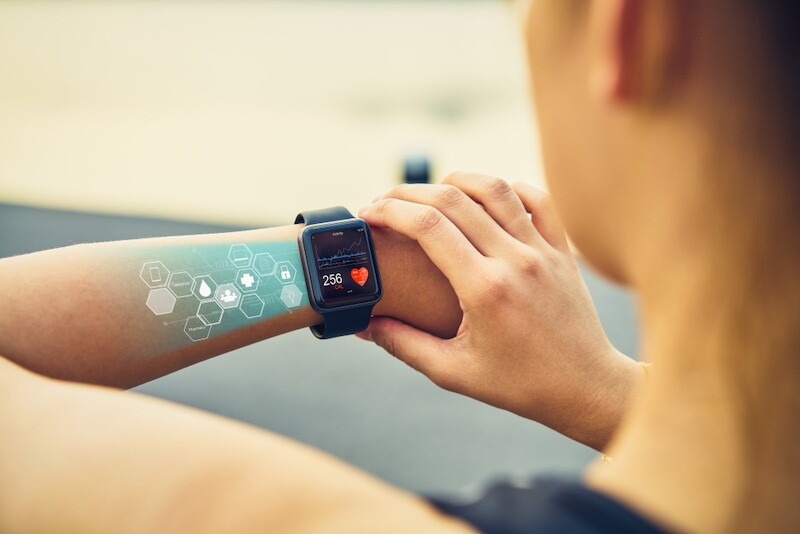Imagine waking up feeling refreshed, knowing that your wellness routine is tailored to your needs, seamlessly integrated into your daily life. From the comfort of your home, you can monitor your health with at-home testing kits for vitamin deficiencies or wearable devices that track your sleep patterns and blood sugar levels.

Consumers are no longer content with one-size-fits-all approaches; they seek products and services tailored to their unique needs. Innovative companies are developing personalized nutrition plans for women’s health, anti-aging products targeting healthy aging, and advanced probiotics for gut health.

That’s the essence of the global wellness market in 2024, a booming industry valued at an astonishing $1.8 trillion, according to McKinsey & Company’s report.
Trends Shaping the Global Wellness Market
In the dynamic landscape of consumer wellness in 2024, several key trends are identified as “reshaping the industry”. The shift towards at-home health solutions, alongside the rise of wearable technology and personalized offerings driven by artificial intelligence, underscores a growing demand for convenience and customization among consumers.

With a growing emphasis on clinically proven ingredients and guidance from trusted healthcare professionals, the wellness market is witnessing a transformation. This surge in personalized, at-home wellness solutions reflects a global shift towards convenience and individualized care. Within the wellness space, seven areas are forecasted growth, including women’s health, healthy aging, weight management, and gut health, presenting exciting opportunities for innovation and investment. (Source: McKinsey & Company’s).
For wellness brands eyeing expansion into new markets, particularly in Asia, success hinges on more than just numbers. It’s about understanding people’s cultural context, their language, and their unique preferences. These global wellness trends reflect the evolving needs and preferences of consumers, underscoring the role of localization in navigating and capitalizing on the $1.8 trillion ‘Feeling Good’ market.

The Role of Localization in Global Wellness Brand Expansion in Asia
Now, let’s talk about the secret ingredient that can supercharge a brand’s expansion efforts: localization. It’s about more than just translating words; it’s about speaking the language of your audience, both literally and figuratively.
Cultural Sensitivity: Take, for instance, understanding religious practices like Halal dietary restrictions in Muslim-majority countries like Indonesia and Malaysia. By ensuring that products are certified Halal, brands demonstrate respect for local customs and build trust among consumers.
Language Localization: Imagine seeing your favorite wellness product’s label in your native tongue, instantly feeling a connection. For example, translating product packaging, labels, and marketing materials into Mandarin Chinese or Japanese enhances accessibility and understanding among consumers.
Product Adaptation: Successful brands go the extra mile by adapting their products to suit local tastes and preferences. For example, a wellness brand entering the Japanese market may develop a matcha-flavored health drink or a durian-infused supplement for consumers in Southeast Asia. By embracing local flavors, brands create products that resonate with regional preferences and foster a sense of belonging.
Regulatory Compliance: Navigating regulatory requirements is crucial for market entry and consumer trust. By ensuring compliance with local regulations and standards, brands instill confidence in consumers and pave the way for seamless market entry. For instance, understanding and adhering to product registration and labeling requirements in China are essential steps for successful expansion into this market.
Distribution Channels: Partnering with local retailers and leveraging e-commerce platforms tailored to each market’s needs can open doors to new opportunities. For example, collaborating with established retailers like Watsons or Boots in Southeast Asia or leveraging popular e-commerce platforms like Lazada and Shopee can help brands reach a wider audience and penetrate new markets.
Marketing Strategies: Crafting campaigns that resonate with local culture and values is essential for connecting with consumers on a deeper level. For instance, featuring imagery that reflects the beauty of each region and highlighting traditional wellness practices can create a genuine connection with consumers.
Influencer Partnerships: Collaborating with local influencers who understand their audience inside out can amplify brand messaging and build authentic relationships with consumers. For example, partnering with fitness influencers in Singapore or wellness bloggers in Thailand can help brands reach their target audience and build credibility in the market.
—
In a world where wellness is no longer a trend but a way of life, localization could be the key to unlocking the full potential of the $1.8 trillion global wellness market. It’s about more than just expanding your brand; it’s about creating meaningful connections with people around the world, empowering them to live their best lives. So, as you move forward on your journey to spread the feel-good vibes of your wellness brand, remember: speak their language, embrace their culture, and watch your brand thrive.



